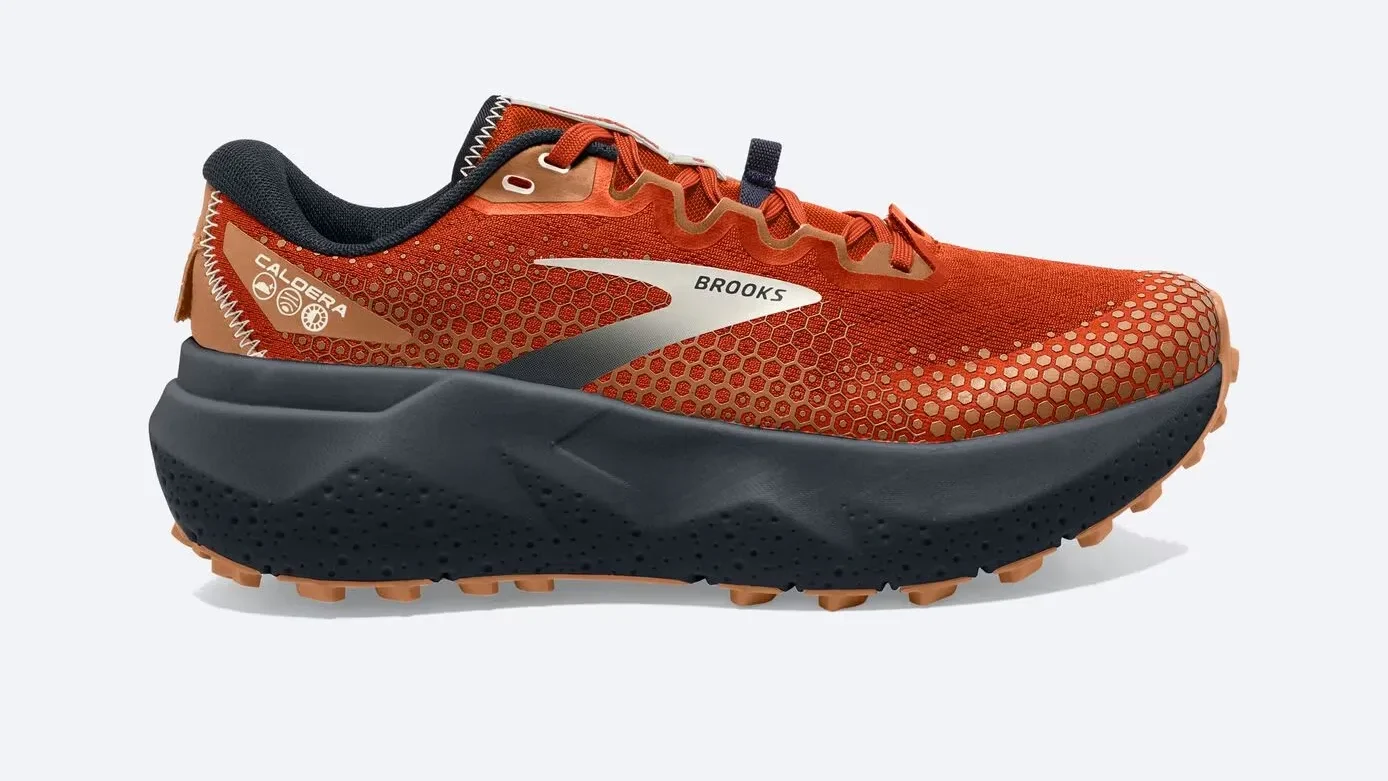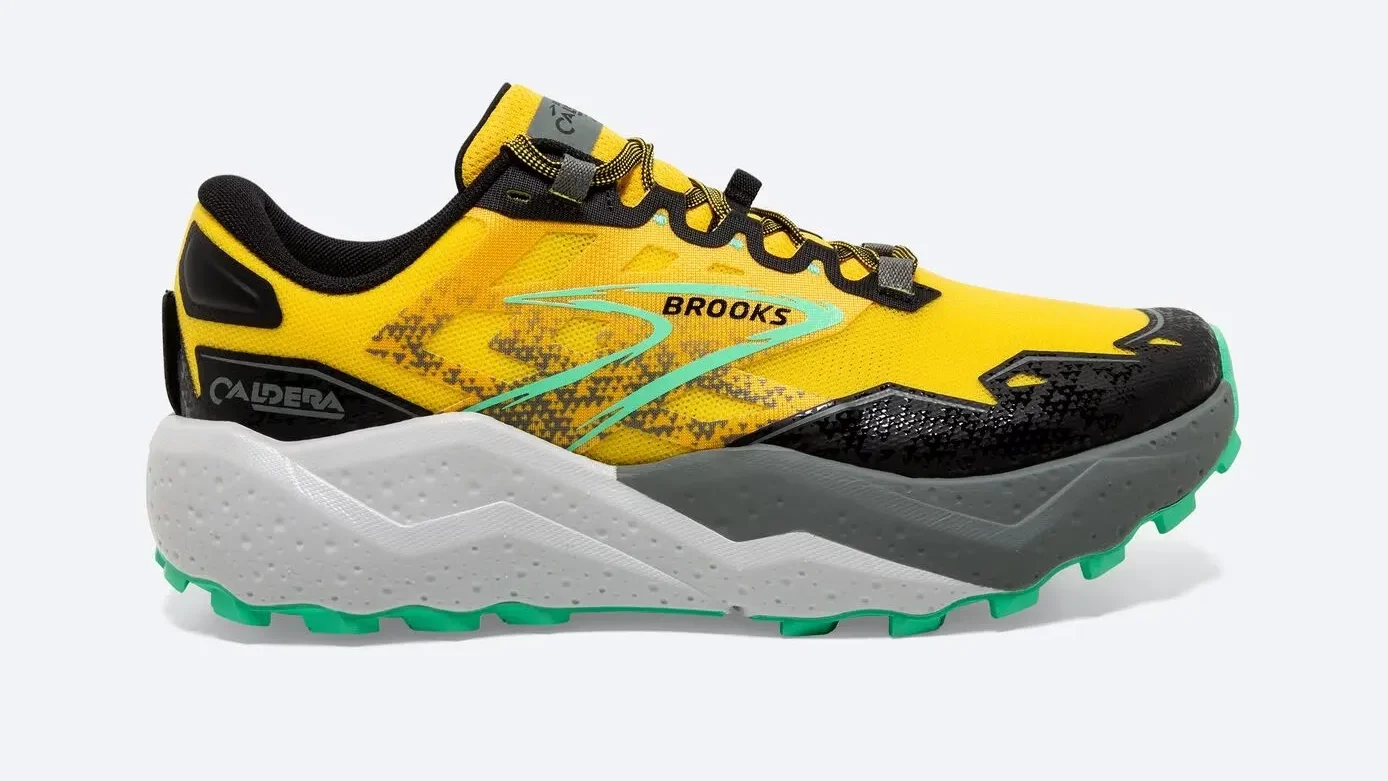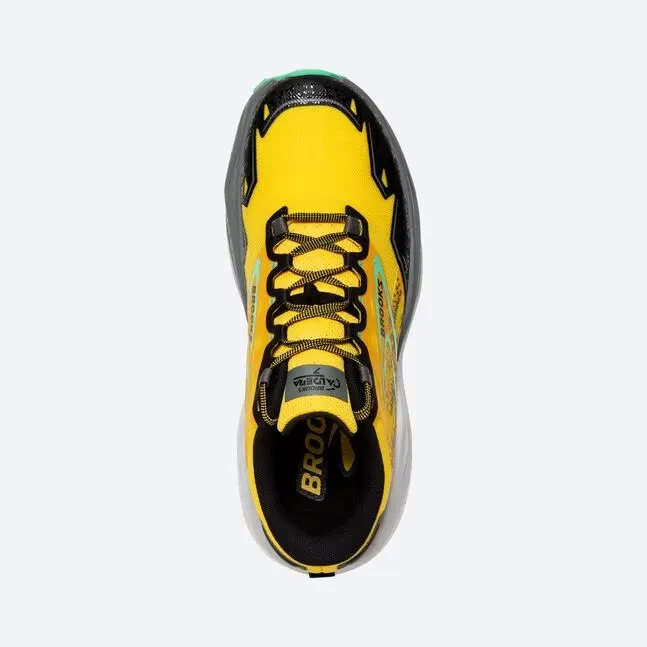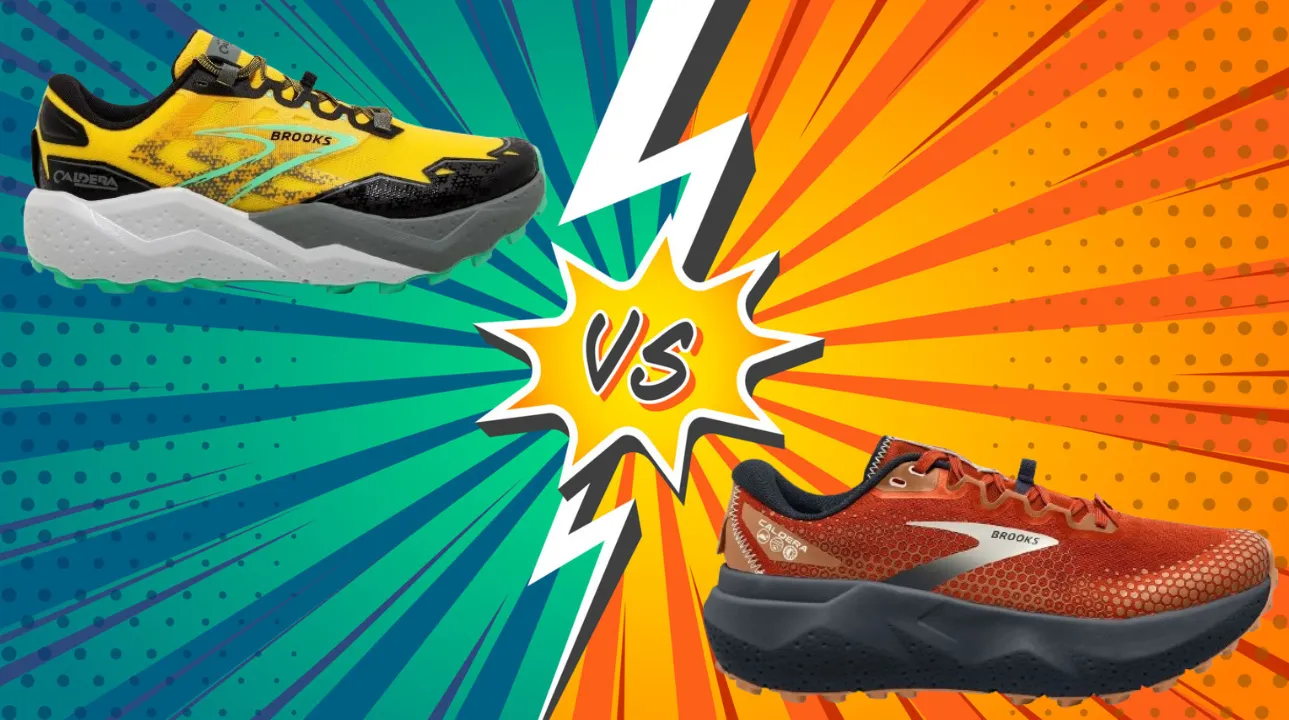The Brooks Caldera has become one of the most popular trail running franchises thanks to its cushioned responsive ride and grippy traction. The Caldera 6, released in 2022, upheld this legacy with the DNA Loft v3 midsole and aggressive Trailtac outsole. Now with the Caldera 7, Brooks has made key upgrades to outsole traction, upper security, and overall footprint.
So how does this long-awaited update compare to its predecessor? Read on for an in-depth face-off between the Caldera 6 and 7 featuring side-by-side analysis of upper materials, underfoot feel, sizing, stability, durability, and real-world performance on the trails. Find out which model of this fan favorite is better suited for you.
Comparison Table between brooks caldera 6 and caldera 7:
| Feature | Caldera 6 | Caldera 7 |
|---|---|---|
| Launched In | 2022 | 2024 |
| Stability | Stable | Neutral |
| Flexibility | Not very flexible | Not very flexible |
| Sizing | Standard | Runs slightly wider than previous versions |
| Weight | 11.3 oz (M), 9.9 oz (W) | 10.6 oz (M), 9.4 oz (W) |
| Cushioning | DNA Loft v3 (maximum cushion) | DNA Loft v3 (maximum cushion) |
| Outsole | Trailtac Rubber | TrailTack Green Rubber |
| Midsole | DNA Loft v3 | DNA Loft v3 |
| Upper | Engineered mesh | Breathable air mesh with overlays |
| Retail Price | $150 | $150 |
Features Comparison:
Materials:
The outsoles on both shoes provide good wet/dry grip, with the Caldera 6 using Trailtac rubber and the Caldera 7 featuring sticky TrailTack Green rubber. Underfoot, the DNA Loft v3 midsole gives both very responsive cushioning.


On the upper, the Caldera 6 has an engineered mesh while the 7 utilizes a more breathable air mesh with sturdy overlays for structure and security.
Durability:
The Caldera line is known for its durability and both the 6 and 7 deliver. The DNA Loft cushioning maintains bounce mile after mile while the grippy outsoles resist wear extremely well over time. The Caldera 7 seems slightly more durable thanks to overlays on the upper made to resist abrasions.
But both are rugged shoes that retain cushioning and traction far better than standard running shoes.
Fit:
The Caldera 7 runs wider than previous Calderas, resulting in more room for wider feet. Reinforcements also provide better midfoot lockdown while still feeling sock-like.


The 6 has sufficient room in the toe box but some may find the 7 more spacious. For maximum foot security while retaining comfort, the Caldera 7 is the better option.
Cushioning:
The max cushion DNA Loft foam provides exceptional softness and energy return in both models, giving a lively, well-protected ride. As with all features, the Caldera 6 and 7 are evenly matched when it comes to cushioning.
Runners will experience the same pillow-like landings and springy toe-offs over long distances.
Stability:
Though not stability shoes per se, both models provide enough support for mild to moderate overpronators thanks to the wider base and secure upper wraps. The 7 has a more dialed-in midfoot fit but otherwise doesn’t confer much more stability than the 6. Either will give sufficient security for most neutral runners and overpronators.
Value:
With a $150 price tag, the Caldera 6 and 7 deliver strong performance for cost. Unless you specifically need the upgrades like traction and upper lockdown on the 7, the 6 still posts impressive stats for much less than the average premium trail shoe. Both models provide great tech and durability at a reasonable price point.
Performance comparison:
Walking:
While designed for running, both the Caldera 6 and 7 perform well for walking trails thanks to the ample cushioning that keeps feet comfortable for striding. The grippy outsoles also inspire confidence on uneven terrain.
Considering key factors like comfort, cushioning, and traction, there is little separating the two models for trail walking use.
Running:
As expected, the Caldera line excels for trail running. The major difference is the Caldera 7’s updated TrailTack outsole ensures stable grip on wet, muddy trails. The more secure upper also means feet stay centered over uneven terrain, preventing roll overs. So trail runners will notice a dialed-in fit and traction upgrading to the 7.
All Day Standing:
The plush midsoles ensure comfortable landings whether traversing trails or work sites. Between models, the Caldera 7 is likely preferred for all day use thanks to the wider fit and reinforced upper that better accommodates swelling feet and withstands abrasion from work environments.
Plantar Fasciitis:
Absorbing harsh impacts, the DNA Loft foam protects from heel and arch discomfort related to plantar fasciitis. For managing PF pain on trails, the Caldera 7 is preferable with its removable foam insole suiting orthotics and roomier forefoot leaving space for splints if needed.
Conclusion:
For trail runners seeking a responsive, stable shoe that can handle miles of terrain, both the Brooks Caldera 6 and 7 deliver the goods with ample cushioning, smooth transitions, and superior traction. These shoes provide a protective and adaptive ride over changing and technical trails.
Moving from the Caldera 6 to the 7, key upgrades include an updated TrailTack outsole improving wet/dry grip, an airier yet supportive upper, and a wider shape to allow natural foot splay. Specifically, if tackling muddy uneven trails, require a highly secure midfoot lockdown, or need to accommodate orthotics, the Caldera 7 would be the better pick between the two.
But the 6 still provides quality cushioning and versatility if you do not need those extra performance features demanded by hardcore trail runners. Analyze your running needs and terrain before deciding which Caldera model fits your training.

